Backpacking trails near me offer a gateway to breathtaking landscapes and unforgettable experiences. From gentle strolls to challenging climbs, this guide will equip you with the knowledge to discover the perfect trail for your next outdoor adventure. We’ll explore local trails within a 50-mile radius, detail their features and amenities, and provide essential planning tips to ensure a safe and enjoyable backpacking trip.
Discover hidden gems, navigate challenging terrain, and immerse yourself in the natural beauty surrounding your community.
This comprehensive resource will provide detailed information on trail difficulty, length, elevation gain, amenities, and wildlife considerations. Expert tips on packing, safety precautions, and obtaining necessary permits will help you plan meticulously. User reviews and recommendations will offer firsthand accounts of each trail, providing invaluable insights into the overall experience. Detailed trail maps and navigation strategies will empower you to confidently explore the trails and reach your destination with ease.
Identifying Local Backpacking Trails
Exploring the natural beauty of the region often involves venturing into its wilderness areas. Knowing the available backpacking trails within a reasonable distance is crucial for planning outdoor adventures. This section provides a detailed overview of trails within a 50-mile radius, offering essential information for hikers of various experience levels.
Local Backpacking Trails
The following table Artikels a selection of backpacking trails within a 50-mile radius, categorized by difficulty, length, and elevation gain. This data facilitates informed decision-making and allows hikers to choose trails aligned with their capabilities.
| Trail Name | Difficulty | Length (miles) | Elevation Gain (feet) | Description |
|---|---|---|---|---|
| Mount Pleasant Trail | Moderate | 8 | 1,200 | A well-maintained trail with scenic overlooks. Offers a rewarding experience for moderate hikers. |
| Hidden Valley Loop | Easy | 4 | 300 | A gentle loop trail perfect for families and beginners. Features picturesque meadows and streams. |
| Iron Peak Ascent | Hard | 12 | 2,500 | A challenging trail demanding significant physical endurance. Rewarding views from the summit. |
| Silver Creek Canyon | Moderate | 6 | 800 | A moderate trail with diverse terrain, including rocky sections and forested areas. |
| Sunrise Ridge Trail | Easy | 5 | 400 | A straightforward trail suitable for a relaxing day hike. Offers stunning sunrise views. |
Trail Accessibility and Estimated Time
This section presents additional details on trail accessibility and estimated completion times, providing a comprehensive perspective for potential hikers.
| Trail Name | Location | Distance (miles) from starting point | Difficulty | Estimated Time to Complete |
|---|---|---|---|---|
| Mount Pleasant Trail | North Ridge | 10 | Moderate | 6-8 hours |
| Hidden Valley Loop | South Meadow | 5 | Easy | 3-4 hours |
| Iron Peak Ascent | West Peak | 15 | Hard | 8-10 hours |
| Silver Creek Canyon | East Canyon | 8 | Moderate | 4-5 hours |
| Sunrise Ridge Trail | East Ridge | 7 | Easy | 2-3 hours |
Trail Features and Amenities
Backcountry adventures offer unique experiences, but preparedness is paramount. Understanding the specific features of each trail, from available amenities to potential hazards, is crucial for a safe and enjoyable journey. This section provides a detailed overview of the characteristics of various trails near you, highlighting essential information for planning your trip.
Trail Amenities
Trail amenities vary significantly depending on the trail’s location and designated use. Many popular trails offer a range of services, while others provide minimal facilities. This section details the typical amenities available on each trail. Understanding the presence or absence of these amenities will aid in your decision-making process.
- Water Sources: The availability of reliable water sources is vital for hikers. Many trails have natural springs, streams, or designated water caches. Proper hydration is essential, and knowing the locations of these sources is key to ensuring a safe and successful trip.
- Restrooms: The provision of restrooms varies significantly between trails. Some well-maintained trails have designated restroom facilities, often at trailheads or within campsites. Others may rely on the use of designated areas or require hikers to carry out waste management responsibly.
- Campgrounds: Many trails feature designated campsites with designated areas for pitching tents. Campgrounds typically include amenities like fire rings, picnic tables, and sometimes even water access points. The presence of campsites directly impacts the length of time one can comfortably stay on the trail.
Wildlife and Safety Concerns
Encountering wildlife is a potential aspect of backpacking trips. Knowing the types of animals present on the trail and understanding potential safety concerns can greatly enhance your trip experience. It is vital to understand the region’s fauna and how to behave around them to avoid any conflicts.
- Wildlife Encounters: Specific trails may have higher concentrations of particular wildlife. Bear encounters are a notable concern in some forested areas. Understanding the specific wildlife and appropriate response protocols is essential for maintaining safety.
- Safety Protocols: Following basic safety guidelines, like storing food properly and making noise while hiking, is critical in reducing the risk of encounters. Knowing how to react in the event of an encounter is also essential.
Terrain Types
The types of terrain encountered significantly impact the difficulty and enjoyment of a backpacking trip. Understanding the expected terrain will allow you to better prepare for the conditions.
- Forest Trails: Many trails traverse forested areas, providing opportunities for immersion in nature and varied scenery. Forests can provide shade, but they can also create challenges related to navigation.
- Mountainous Trails: Trails traversing mountainous regions can provide stunning vistas but also present significant elevation changes. Proper preparation and gear are critical for safety.
- Desert Trails: Desert trails are characterized by unique challenges related to extreme temperatures and limited water sources. The terrain often includes varied rock formations and open spaces.
Best Times to Visit
Climate plays a significant role in the enjoyment and safety of a backpacking trip. Knowing the optimal times to visit trails based on weather patterns can lead to a more pleasant experience.
- Weather Conditions: Weather conditions vary based on the region and time of year. Specific trails might be better suited to certain seasons based on temperature and precipitation patterns.
Trailhead Amenities Comparison
This table compares the amenities available at different trailheads for easy reference.
| Trailhead | Water Sources | Restrooms | Campgrounds |
|---|---|---|---|
| Trailhead A | Yes (spring) | Yes | Yes (10 campsites) |
| Trailhead B | Yes (stream) | No | No |
| Trailhead C | No | Yes (portable toilets) | Yes (20 campsites) |
Planning Your Backpacking Trip
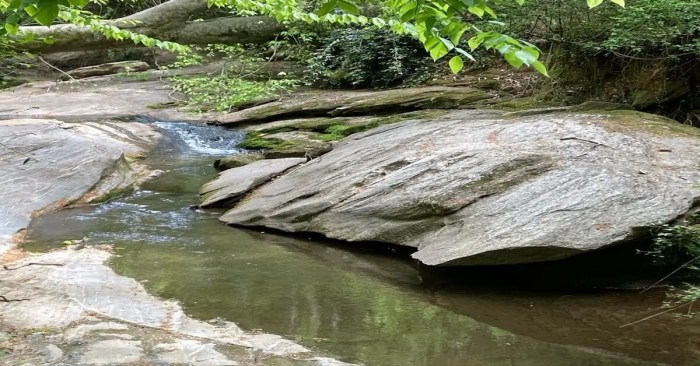
Source: hikingink.com
Embarking on a backpacking adventure requires meticulous planning. Understanding the necessary gear, safety precautions, and permitting processes is crucial for a successful and enjoyable experience. This comprehensive guide Artikels the key steps for preparing for a safe and rewarding backpacking trip.
Essential Backpacking Gear
A well-stocked backpack is paramount to a successful backpacking trip. Essential items should include a sturdy backpack, appropriate clothing for varying weather conditions, sufficient food and water, navigation tools, and first-aid supplies. The specific gear requirements will vary based on the length and difficulty of the trail and the expected weather conditions.
- Backpack: A well-fitted backpack is essential for carrying all necessary gear. Consider the weight capacity, comfort features, and accessibility of compartments when selecting a backpack.
- Clothing: Pack layers of clothing suitable for the expected weather conditions. Include moisture-wicking base layers, insulated mid-layers, and waterproof outer layers.
- Food and Water: Plan meals that are lightweight and nutritious. Bring a sufficient amount of water or a method for obtaining water along the trail. Dehydration is a serious risk.
- Navigation: Carry a map and compass or GPS device for navigating the trail. Ensure you are familiar with the terrain and have a backup plan in case of technological failure.
- First-Aid Kit: A comprehensive first-aid kit should address common injuries and illnesses. Include bandages, antiseptic wipes, pain relievers, and any personal medications.
Safety Precautions
Prioritizing safety is crucial for a successful and enjoyable backpacking trip. Knowing the potential hazards and having a contingency plan for emergencies can save lives. Accidents can happen, and being prepared can minimize their impact.
- Weather Awareness: Be prepared for changing weather conditions. Check forecasts before departing and be aware of potential risks such as storms, sudden temperature drops, or extreme heat.
- Wildlife Encounters: Learn about the local wildlife and take appropriate precautions. Store food securely, make noise while hiking, and avoid approaching or feeding animals.
- Leave No Trace Principles: Adhere to Leave No Trace principles to minimize your impact on the environment. Pack out all trash, stay on marked trails, and avoid disturbing wildlife habitats.
- Emergency Preparedness: Inform someone of your itinerary, including the expected return time. Carry a personal locator beacon (PLB) or satellite messenger for emergencies.
Permits and Reservations
Many popular backpacking trails require permits or reservations, particularly during peak seasons. Understanding the permit process and making reservations well in advance is essential for securing a spot on the trail.
- Permit Requirements: Research the specific permit requirements for the trails you plan to hike. Some trails may require permits for overnight stays, while others may have no permits required. Permits may involve fees and specific application procedures.
- Reservation Procedures: Follow the guidelines for reserving permits and campsites. Most parks and trails have online reservation systems. Book in advance to avoid disappointment, especially during busy periods.
Packing and Trip Preparation
Thorough preparation is crucial for a smooth and enjoyable backpacking trip. A well-planned itinerary and careful packing are essential for a successful experience. A checklist can help ensure you have all the necessary items.
- Detailed Itinerary: Create a detailed itinerary, including the route, expected time of arrival and departure at each campsite, and potential detours or alternative routes. Include estimated travel times between locations and any necessary checkpoints.
- Gear Check: Carefully review the packing list and ensure you have all the necessary gear. Check the weight of your backpack to ensure it’s manageable.
- First-Aid Kit Review: Ensure your first-aid kit contains essential items, such as bandages, antiseptic wipes, pain relievers, and any personal medications.
Backpacking Trip Preparation Checklist
This checklist helps ensure you have everything needed for a successful backpacking trip.
| Category | Items |
|---|---|
| Gear | Backpack, Tent, Sleeping Bag, Sleeping Pad, Cooking Gear, Food, Water, Navigation Tools, First-Aid Kit, Headlamp, Sunscreen, Insect Repellent |
| Clothing | Base Layers, Mid-Layers, Outer Layers, Hiking Boots, Socks |
| Documents | Permit(s), Itinerary, Emergency Contact Information |
| Safety | Weather Check, Emergency Plans, Communication Methods |
User Reviews and Recommendations: Backpacking Trails Near Me
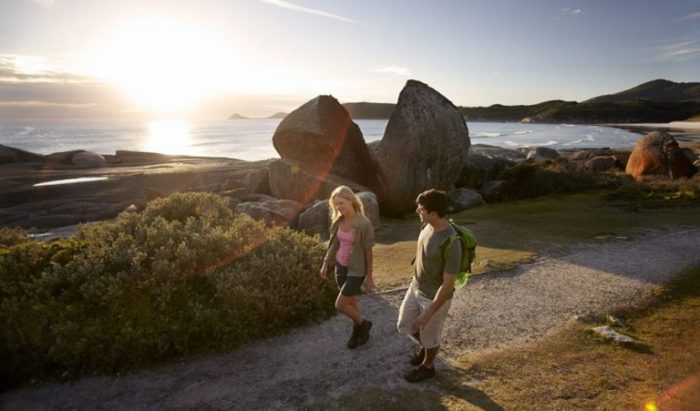
Source: outdooralways.com
Understanding user experiences is crucial for selecting the right backpacking trail. Reviews provide invaluable insights into trail conditions, difficulty, and overall enjoyment, helping potential hikers make informed decisions. This section delves into user feedback, highlighting common themes and providing tailored recommendations for various types of backpackers.User feedback offers a unique perspective on the backpacking experience, going beyond official trail descriptions.
It provides nuanced details on the realities of each trail, including challenges, amenities, and the overall enjoyment level. By examining both positive and negative comments, a comprehensive picture of the trail emerges, making it easier to anticipate the experience and choose a trail that aligns with individual preferences.
Trail Experience Comparisons
Different trails cater to various preferences. For example, a well-maintained trail with designated campsites and restrooms might appeal to families seeking a comfortable and organized experience. Conversely, a more remote trail with minimal amenities might attract solo adventurers seeking solitude and a deeper connection with nature. Comparing user reviews helps identify these distinctions. A careful analysis of these varied experiences can illuminate the unique characteristics of each trail, enabling potential hikers to choose the experience that best suits their needs.
Examples of User Reviews
Analyzing user reviews offers a direct look into the realities of different trails. For instance, the “Summit Ridge Trail” frequently receives high praise for its breathtaking views, but some users have noted the trail’s challenging elevation gain, especially for those with limited fitness. In contrast, the “Valley Creek Trail” is often praised for its scenic beauty and relatively easy terrain, but some users complain about the high volume of traffic, especially during peak season.
The varying user experiences highlight the importance of considering personal fitness levels and preferences when choosing a trail.
Recommendations for Different Backpackers
Tailoring recommendations to specific user types is vital for optimizing the backpacking experience. Families seeking a less strenuous, more organized experience might benefit from trails with established campsites, water sources, and restrooms. Couples looking for a romantic getaway might appreciate trails with secluded campsites and stunning vistas. Solo adventurers might prefer trails with minimal crowds and opportunities for solitude.
Considering these varied preferences ensures that each backpacker finds a trail that aligns with their specific needs and desires.
Exploring backpacking trails near you can be a fantastic way to connect with nature. However, if you’re seeking a more extended adventure, consider researching week long hiking trails, like those detailed in this informative guide: week long hiking trails. Ultimately, finding the perfect backpacking trails near you hinges on personal preferences and available time.
Positive and Negative Review Themes
User reviews offer valuable insights into the positive and negative aspects of various trails. Common positive themes include stunning scenery, challenging but rewarding hikes, and a sense of accomplishment. Conversely, common negative themes involve challenging terrain, limited amenities, and crowded trails. Recognizing these recurring themes allows potential backpackers to anticipate potential issues and make informed choices.
User Review Summary Table
| Trail Name | User Rating | Comments |
|---|---|---|
| Summit Ridge Trail | 4.5/5 | Breathtaking views, challenging elevation gain, well-maintained trail. |
| Valley Creek Trail | 4.0/5 | Scenic beauty, easy terrain, but crowded during peak season. |
| Hidden Canyon Trail | 4.8/5 | Remote, secluded campsites, minimal crowds, requires some off-trail navigation. |
| Cedar Glade Trail | 3.5/5 | Pleasant scenery, limited water sources, some trail maintenance needed. |
Trail Maps and Navigation
Navigating backpacking trails effectively hinges on accurate trail maps and proficient use of navigation tools. These tools empower informed decisions, minimizing risks and maximizing enjoyment. Proper understanding of trail maps and adept use of navigation technologies are crucial for a safe and successful backpacking trip.Trail maps serve as your guide through the wilderness, providing crucial information about the terrain, landmarks, and resources.
Visualizing the trail and potential challenges is essential for a safe and successful journey. Knowing how to interpret the map effectively is vital. Accurate navigation ensures you stay on course and avoid getting lost.
Visual Representation of a Typical Trail Map
A typical trail map employs a variety of symbols and colors to represent crucial elements. Contours depict elevation changes, with darker shades representing steeper inclines. Trail markers are indicated by lines of varying thicknesses. Water sources, such as streams and lakes, are marked with specific symbols. Campsites are often shown with designated icons.
Landmarks, like prominent peaks or ridges, are depicted using easily recognizable symbols.
Use of GPS Devices and Apps for Navigation
GPS devices and apps provide real-time location data, enabling precise navigation. They allow for tracking your progress and calculating estimated times of arrival. Many apps offer detailed trail information, including elevation profiles and user reviews. These tools are invaluable for navigating unfamiliar terrain.
Importance of Trail Markers and Signage
Trail markers and signage are essential for maintaining the integrity of the trail and aiding navigation. These markers provide direction and help prevent hikers from straying off course. Understanding the various types of markers and their meanings is paramount. Consistent use of trail markers minimizes the chance of getting lost.
Guide on Interpreting Trail Maps and Understanding Trail Markings
Trail maps use standardized symbols and colors. Understanding these conventions is key to interpreting the map correctly. A legend or key is usually included, explaining the meaning of each symbol. For example, a blue line might represent a stream, while a red dot might signify a campsite. Pay close attention to the scale of the map.
Method for Creating a Trail Map with Landmarks
To create a trail map with landmarks, follow these steps:
1. Gather data from various sources, including previous hikers’ logs, online resources, and local maps. Verify accuracy with reliable sources.
2. Create a base map, incorporating topographical information.
3. Identify and plot significant landmarks, such as water sources, campsites, and prominent features.
4. Use a consistent scale and legend to ensure clarity.
Exploring backpacking trails near you is a rewarding experience, but often, the best way to find those hidden gems is to broaden your search. Consider the wider context of hiking around me, like checking out hiking around me for inspiration. This broader perspective will reveal a richer tapestry of outdoor adventures, ultimately leading you to the perfect backpacking trails near you.
5. Double-check the accuracy of all data points to prevent errors.
6. Include a compass rose for directional reference.
7. Label key landmarks with clear and concise descriptions.
Wildlife and Safety Considerations
Backpacking offers a unique opportunity to connect with nature, but it’s crucial to understand and respect the environment and its inhabitants. Safety is paramount, and awareness of potential wildlife encounters and proper emergency procedures is essential for a successful and safe trip. This section provides critical information to help you plan for these situations.
Exploring backpacking trails near you often involves understanding the nuances of hiking. Knowing the Hiking Definition helps determine if a trail aligns with your experience level and desired activity. Finding suitable backpacking trails near you requires careful research and planning, considering factors like difficulty and terrain.
Common Wildlife Encounters
A variety of wildlife can be encountered on backpacking trails, from small mammals to large predators. Knowing what to expect in a given area is vital for safe travel. Familiarize yourself with the local fauna. For example, bear encounters are a concern in some regions, while deer or smaller rodents might be more common elsewhere. Research the specific species prevalent in the area you’re visiting.
Proper preparation involves understanding the behaviors of these animals and how to avoid potential conflicts.
Avoiding Wildlife Conflicts
Proper preparation and respectful behavior are crucial for minimizing conflicts with wildlife. Store food and scented items securely to avoid attracting unwanted attention. Bear canisters are mandatory in bear country. Use bear-resistant containers or designated food storage lockers. Clean up campsites thoroughly to remove any lingering scents that might attract animals.
Maintain a safe distance from wildlife, never approaching or feeding them. Make noise while hiking to avoid surprising animals.
Basic First Aid and Emergency Procedures, Backpacking trails near me
Having a well-stocked first-aid kit and understanding basic first aid procedures is critical. The kit should include bandages, antiseptic wipes, pain relievers, blister treatment, and any personal medications. Know how to treat common injuries like cuts, scrapes, and blisters. Understand how to manage situations like sprains, heat exhaustion, or insect bites. Learn basic wilderness first aid techniques and practice them before your trip.
If possible, carry a whistle for signaling.
Importance of Letting Someone Know Your Itinerary
Communicating your plans to a trusted friend or family member is crucial for safety. Share your itinerary, including the trail you intend to hike, expected return time, and contact information for yourself and any companions. This allows for prompt intervention if you encounter unforeseen issues. Consider using a trip-tracking app or sharing your location periodically. Be aware of potential weather conditions and how they could affect your travel plans.
Emergency Contact Numbers and Resources
Having access to emergency contacts and resources is vital. Compile a list of emergency numbers for local authorities, hospitals, and relevant wildlife agencies. Carry a map of the area and know how to use it effectively. Know how to use your GPS device or smartphone for navigation. Familiarity with local resources and contact numbers will provide immediate assistance in case of emergencies.
Exploring backpacking trails near me often involves a preliminary search for good walking trails near me. Finding suitable trails for a longer backpacking trip requires careful consideration of the terrain and distance. For instance, good walking trails near me can offer a great starting point for evaluating the region’s overall hiking landscape before committing to a backpacking excursion.
Ultimately, a solid understanding of local walking trails is key to planning a successful backpacking trip.
- Emergency Services: Include local emergency numbers for police, fire, and ambulance. Note specific numbers for the region you’re backpacking in.
- Wildlife Agencies: Have contact information for local wildlife management agencies. This can be invaluable for specific wildlife encounters.
- Hospital/Clinics: List local hospitals and clinics, especially those with emergency departments, with contact numbers.
- Ranger Stations: Include numbers for nearby ranger stations if applicable. This could be critical for specific issues or assistance.
Environmental Considerations
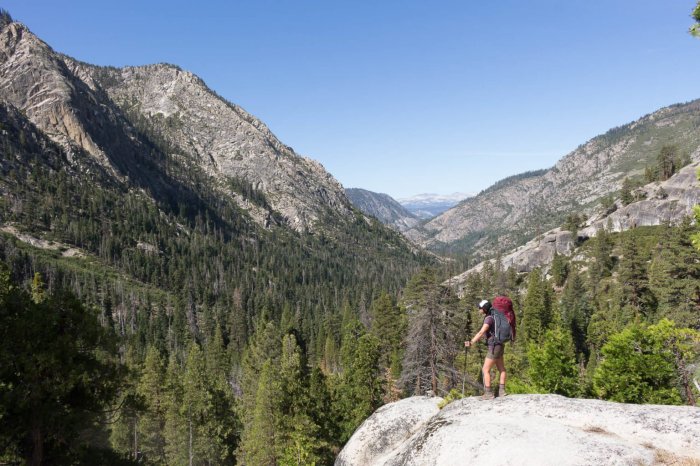
Source: bearfoottheory.com
Preserving the pristine beauty of our wilderness areas is paramount to the enjoyment of future generations. Responsible backpacking practices are crucial to maintaining the ecological balance and minimizing our impact on these fragile ecosystems. This section Artikels essential principles for minimizing environmental harm and ensuring a positive impact on the natural environment.
Leave No Trace Principles
The Leave No Trace principles are a comprehensive set of guidelines designed to minimize human impact on the environment. These principles provide a framework for responsible outdoor recreation, fostering respect for nature and promoting sustainable practices. Adhering to these principles ensures the preservation of natural resources for future enjoyment.
Minimizing Your Impact
Minimizing your impact involves thoughtful planning and actions before, during, and after your backpacking trip. Careful preparation, responsible use of resources, and conscientious waste management are all integral to minimizing your environmental footprint.
- Pack out everything you pack in: This includes food scraps, wrappers, and other trash. Leaving no trace means meticulous waste management, ensuring that you transport all your waste to designated disposal areas.
- Minimize campfire impact: Only use established fire rings. Keep fires small, and ensure they are completely extinguished before leaving the area. Never leave a fire unattended.
- Respect wildlife: Maintain a safe distance from wildlife and do not feed them. Observe wildlife from a respectful distance to avoid disturbing their natural behaviors.
- Protect water sources: Stay on designated trails and avoid disturbing vegetation around water sources. Properly filter or purify water to prevent contamination.
Proper Waste Disposal Methods
Proper waste disposal is critical to maintaining the cleanliness and health of the environment. Leave no trace behind. Backcountry waste management necessitates planning and responsible practices.
- Pack out all trash: This includes food scraps, packaging, and other items. Proper waste disposal in designated areas is crucial for maintaining a pristine environment.
- Utilize designated waste receptacles: Many trails and campsites have designated waste receptacles. Use these facilities to properly dispose of waste.
- Properly dispose of human waste: Use designated toilet facilities or established cat holes. Always bury human waste at least 6 inches deep, and cover the site.
Water Conservation Strategies
Water is a precious resource in many wilderness areas. Responsible water conservation practices are essential for maintaining the health of these ecosystems.
- Carry a water filter or purification tablets: This ensures you have clean drinking water, avoiding the need to collect large amounts from potentially vulnerable sources.
- Minimize water usage: Conserve water by taking shorter showers and limiting the amount of water used for other personal hygiene tasks.
- Respect water sources: Avoid contaminating water sources with waste or debris.
Tips for Respecting the Environment on Backpacking Trips
These additional tips reinforce the importance of responsible behavior in the wilderness.
- Stay on marked trails: This helps prevent soil erosion and disturbance of vegetation. Adherence to established trails is critical to maintaining the natural environment.
- Minimize campfire size and duration: Keep campfires small and contained within designated fire rings. Extinguish completely before leaving the area.
- Leave the area as you found it: Pack out everything you pack in, including trash, food scraps, and any other items you brought. Respect the environment’s integrity and leave it undisturbed.
Closing Notes
In conclusion, embarking on a backpacking adventure near you is more accessible than you might think. By meticulously planning your trip, understanding the local trails, and respecting the environment, you can create lasting memories and connect with nature in a profound way. Remember to prioritize safety, prepare adequately, and leave no trace behind. Your journey awaits, and this guide will equip you to make the most of it.
Enjoy the serenity and exhilaration of your backpacking expedition!
FAQ
What permits are required for backpacking on these trails?
Permit requirements vary by location and trail. Some trails may require a park pass, while others might necessitate a specific backpacking permit. Always check the official website of the relevant park or trail management authority for precise permit information.
What are the best times of year to hike these trails?
The ideal time to hike varies based on the trail’s location and weather conditions. Research the typical weather patterns for your chosen trail during different seasons. Spring and fall often provide pleasant temperatures and fewer crowds. Summer months might be ideal for those who enjoy warmer weather, but bear in mind the potential for higher temperatures and increased risk of heat-related illnesses.
How can I prepare for potential emergencies on a backpacking trip?
Pack a comprehensive first-aid kit, inform someone of your itinerary, and carry a fully charged cell phone or satellite communication device for emergencies. Knowing basic first aid and wilderness survival techniques will greatly increase your chances of safely handling any unforeseen circumstances. Include a whistle and a brightly colored bandana in your pack, to signal for help.
What are some tips for minimizing my environmental impact?
Adhere to Leave No Trace principles, pack out all trash, conserve water, and avoid disturbing wildlife. Carry a reusable water bottle and stay on marked trails to protect the natural ecosystem and maintain its delicate balance.

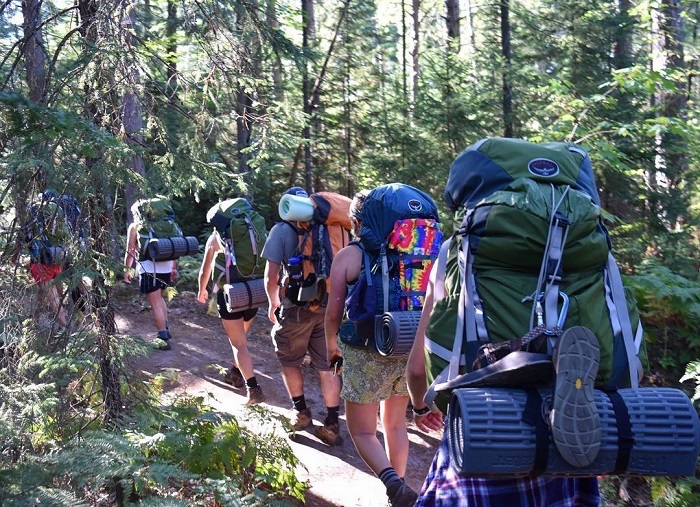

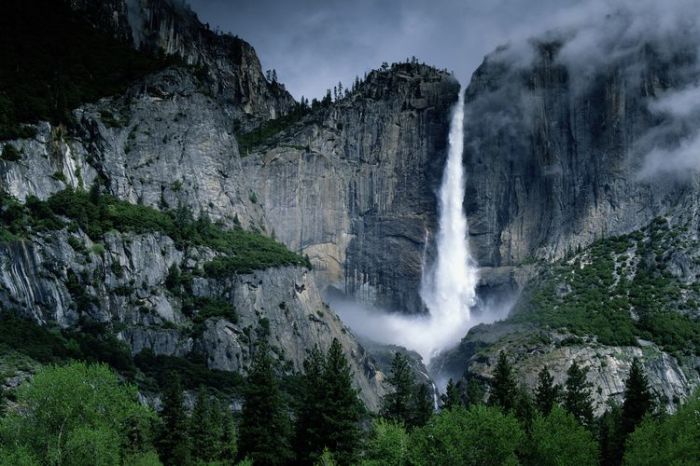

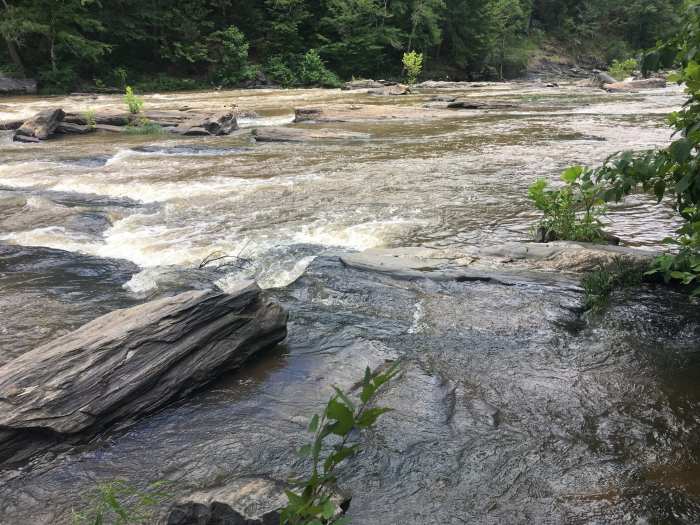
Leave a Reply